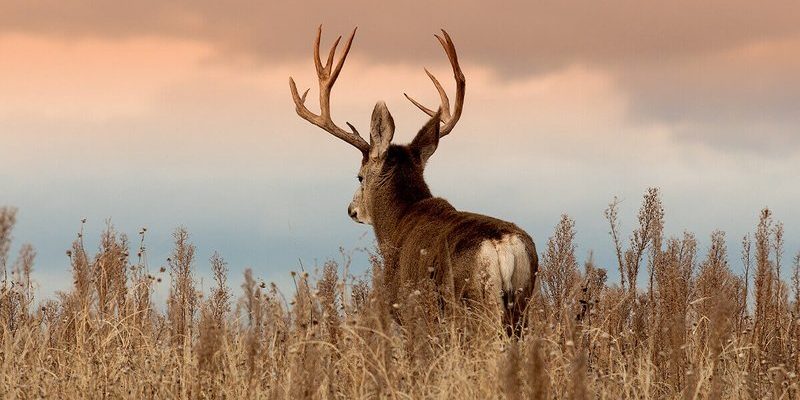
So, what’s the deal with mule deer? Why do they have those big ears? Are they really that different from white-tailed deer? As we dive into some common myths, we’ll sort fact from fiction and get to know these amazing creatures better. Grab a cup of coffee, and let’s sort through the stories about mule deer together!
Mule Deer vs. White-Tailed Deer: The Great Confusion
One of the most common misconceptions is that mule deer and white-tailed deer are the same. Here’s the thing: while they share some similarities, they are definitely not just two names for the same animal. Mule deer are easily recognizable by their large, mule-like ears, which help them detect sounds while foraging in the brush. White-tailed deer, on the other hand, have smaller ears and are often recognized by the white underside of their tails, which they raise as a warning to other deer when they feel threatened.
Another factor that sets them apart is their range of habitats. Mule deer thrive in open plains, mountainous regions, and scrublands, from the west coast to the Rocky Mountains. White-tailed deer are more adaptable and can often be found in forested areas and even suburban settings. If you ever find yourself in a national park or a mountainous area of the West, keep an eye out for those distinctive long ears peeking out from behind a bush!
Myth: Mule Deer Are Always Solitary
You might think that mule deer prefer to roam alone, given their sometimes-secretive nature. However, that’s not entirely accurate. Mule deer are actually social animals and often form small groups, especially during the winter months when they rely on each other for warmth and safety. These groups, called herds, can consist of does and their young, while males usually disperse during the breeding season to find mates.
During this time, male mule deer engage in what’s known as “rut,” where they display their strength and dominance. This can lead to some pretty fascinating behaviors, like sparring with their antlers. Think of it like a high school dance where the guys show off to impress the girls—it might look rough, but it’s all part of the courtship rituals!
Myth: Mule Deer Are Not Fast Movers
Another myth is that mule deer are slow and clumsy animals. In reality, mule deer are incredibly agile and fast. They have a unique bounding style, often leaping gracefully over obstacles. When alarmed, they can reach speeds of up to 30 miles per hour. This ability to quickly escape from predators is crucial for their survival.
Picture this: you’re hiking in the mountains, and suddenly you spot a mule deer. In the blink of an eye, it springs away, bounding gracefully through the rocky terrain. It’s impressive to watch! Their powerful legs and strong muscles allow them to cover ground quickly, making them hard to catch.
Myth: All Mule Deer Have the Same Coloration
A common misconception is that mule deer have a uniform coat. However, their coloration can vary widely based on their habitat and season. In the summer, mule deer tend to have reddish-brown fur that helps them blend in with the surrounding vegetation. As winter approaches, their fur thickens and darkens to a grayish-brown, providing better insulation against the cold.
You might find that mule deer living in mountainous areas have darker coats due to the rocky terrain and shaded environments. In contrast, those in more open areas may have lighter fur to blend in with the grasslands. This variation not only helps with camouflage but also indicates the diverse environments these deer can inhabit.
Myth: Mule Deer Are Primitive Animals
It’s easy to think of mule deer as relics of the past, especially when you hear tales of their ancient relatives. However, this assumption overlooks their adaptability and evolution as a species. Mule deer have successfully thrived in various environments and have developed important behaviors to survive.
For instance, they are adept at finding food and navigating their terrain, which includes clever foraging strategies. They often use their keen sense of smell and excellent hearing to locate food sources while avoiding predators. So, while they may appear similar to their ancestors, mule deer are anything but primitive—they’re skilled survivors!
The Role of Mule Deer in Their Ecosystem
Understanding the importance of mule deer in their ecosystem often gets overshadowed by myths. Mule deer play a crucial role in maintaining the health of their habitats. As herbivores, they help control vegetation growth by grazing on shrubs and young trees. This, in turn, promotes new plant growth and maintains a dynamic ecosystem.
Furthermore, mule deer serve as prey for larger predators like mountain lions and coyotes. This predator-prey relationship is a vital part of the food web. When mule deer populations are healthy, it often indicates a balanced ecosystem. So, the next time you think about these majestic creatures, remember that they’re not just pretty faces—they’re integral to their environment.
A Final Note on Conservation and Misconceptions
With all these myths, it’s important to understand the real challenges mule deer face today. Habitat loss, climate change, and human interaction are significant threats to their populations. By debunking these misconceptions, we can foster a greater appreciation for mule deer and promote conservation efforts to protect their habitats and ensure their survival.
Remember, understanding the truth about mule deer goes beyond curiosity; it’s about respecting them as vital components of our natural world. So, whether you’re hiking, hunting, or simply enjoying wildlife, keep these facts in mind to help spread awareness and appreciation for these incredible animals.
In conclusion, mule deer are fascinating creatures full of surprises. By dispelling these common myths, we can learn to appreciate them for what they truly are—strong, social, and resilient animals that are essential to our ecosystems.

